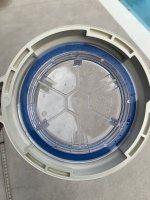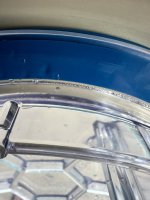- Jan 9, 2024
- 30
- Pool Size
- 13000
- Surface
- Plaster
- Chlorine
- Salt Water Generator
- SWG Type
- CircuPool RJ-30 Plus
I was mostly just interested in whether or not the pump GPM metric in the app was accurate. If you're saying it should be good enough, then I'll be happy to save the money and time (and avoid cutting my nice new PVC) instead!
I do seem to have a tiny suction leak that I can't track down now. I tried the garden hose trick and put some extra cement around all the new joints but it didn't seem to make a difference. I did notice that the gasket in the pump lid seems to be slightly misshapen, wondering if that could be the culprit. Top left in the pic it seems to be flattened and peeking out past the clear plastic window. I sent Pentair a message and will see what they say.
I do seem to have a tiny suction leak that I can't track down now. I tried the garden hose trick and put some extra cement around all the new joints but it didn't seem to make a difference. I did notice that the gasket in the pump lid seems to be slightly misshapen, wondering if that could be the culprit. Top left in the pic it seems to be flattened and peeking out past the clear plastic window. I sent Pentair a message and will see what they say.








